Acute sinusitis treatment with antibiotics. Antivirals and sinusitis. Antibiotics: when are they needed?
Sinusitis - inflammation of the mucous membrane of the paranasal maxillary sinuses. The occurrence of this common disease is associated with human viral infections, infectious diseases such as influenza, measles (see), as a complication of sore throat, otitis media and other diseases of the upper respiratory tract, as well as diseases of the roots of the molars of the upper teeth.
Recently, there have been an increase in cases of allergic sinusitis, as well as oncological diseases after treatment, with helminthiasis (see) and other chronic diseases that reduce the body's defenses. Treatment of antritis with antibiotics should be only according to indications, in complex treatment and is prescribed only by a doctor.
In most cases, self-treatment is not safe, it can worsen the condition and slow down the healing process. First of all, you should be examined by a doctor who will make an accurate diagnosis, the cause of the disease and prescribe a complex treatment.
Symptoms of sinusitis
If, after some improvement in the condition after a flu or a cold, a recurrent increase in body temperature has occurred, the general condition has worsened, shooting pains have appeared when the head is tilted downwards, and when tapped lightly in the maxillary sinuses, you can suspect the beginning of sinusitis. The following symptoms of sinusitis are the reason for the visit to the doctor otolaryngologist:
- Stuffy nose constantly or periodically, reduced sense of smell.
- Nasal discharge they may be plentiful, purulent, yellow-green, or transparent, in rare cases they may be absent, this happens if the sinuses are already filled with pus and the discharge is very thick.
- Feeling of pressure, bursting, tension in the sinus area.
- Headacheaggravated by leaning the body forward, upside down.
- Severe pain in the region of the forehead, in the region of the maxillary sinuses, cheekbones, cheeks, localized in only one half of the face, or in a bilateral process - on the entire front surface. In the acute process, the pain may be pronounced, and in chronic sinusitis is not as intense, sometimes a person simply experiences pain in the eye area or headaches.
- Temperature, in acute sinusitis, it can be quite high, above 38 ° C, with chronic, most often subfebrile or normal.
- General condition of weakness increased fatigue. Due to nasal congestion, headaches, a person is disturbed by sound sleep, appetite decreases, a feeling of apathy, lethargy appears, and depression develops.
Diagnosis of sinusitis
Anamnesis of the patient. Before making a diagnosis, the doctor analyzes the patient’s history, ascertains the diseases that preceded sinusitis (influenza, acute respiratory viral infections, otitis media, angina, inflammation of the upper jaw teeth), a tendency to allergic manifestations (pollinosis, urticaria, bronchial asthma etc.), intolerance to food, drugs. The factors provoking the development of sinusitis include:
- Reduced immunity due to any chronic diseases, allergic reactions, helminth infections, metabolic disorders.
- impairing normal nasal breathing, congenital anomalies of anatomical structures in the nasal cavity.
- Vasomotor, hypertrophic, allergic rhinitis, .
- Inadequate treatment of flu, colds, acute respiratory viral infections, rhinitis.
- Diseases and removal of the teeth of the upper jaw.
X-ray diagnostics. To date, the most reliable method for the diagnosis of sinusitis is still radiological, and with modern contrast tomography, the accuracy of diagnosis has increased significantly. The picture can give information about the size, volume of the sinuses, their filling with pus, air. Sometimes the doctor recommends x-rays in several projections - lateral, nasal-chin or fronto-nasal. When the sinus in the pictures is marked blackout of a different nature, this is due to the delay of the rays of the medium, which is denser than the air. However, it should be remembered about the dangers of X-rays and CT (increases the risk of thyroid cancer, etc.), fluorography sinuses it is enough, and the radial load is minimal.
Puncture of the maxillary sinuses - This is an informative diagnostic method, but an outdated method for the treatment of sinusitis. Due to possible complications (emphysema of the cheek, abscess of the orbit, embolism of blood vessels), painful procedure and the passage of sinusitis into a chronic inflammatory process, it is rarely performed.
In connection with the use of the latest technologies for the treatment of antritis — the use of the YAMIK sinus catheter, the herbal preparation Sinuforte (enhancing local immunity and excellent cleansing sinuses), the frequency of using the method of nasal puncture in sinus for its treatment and diagnosis has decreased.
Bacteriological culture of nasal smear - as an independent diagnostic method for determining whether it is sinusitis or not - it does not matter. Carrying out this diagnosis is advisable only to select an antibiotic for antritis, to which pathogens would be susceptible.
When is antibiotic therapy for antritis not advisable?
First you need to determine the true cause of sinusitis, its causative agent. Since with some provoking factors that cause sinusitis, antibiotic therapy may not only be ineffective, but it can aggravate inflammation and delay the healing process.
- If antritis occurs as a result of allergic manifestations, in this case, the use of antibiotics is not justified.
- In chronic rhinosinusitis, antritis associated with fungal infection, also taking broad-spectrum antibiotics only sharpens the process.
- With viral infectionswhen washing, inhalation and immunotherapy can help with mild sinusitis, taking antibiotics is also not worth it.
When can you not do without antibiotics?
But with the sharp bright process, with high fever, severe intoxication of the body is not of viral origin, severe pain in the sinuses, purulent discharge from the nose - taking oral antimicrobial agents or intramuscular injections of the antibiotic are necessary.
What antibiotics are most effective?
The best antibiotic for sinusitis is the one to which, by smear analysis, the causative agent of inflammation is sensitive. If there is no visible relief within 72 hours after taking the antibiotic, then either the pathogen has become resistant to this drug, or the cause of antritis is not bacterial, but fungal or allergic.
If sinusitis is caused by banal streptococcus, staphylococcus, hemophilus bacilli, then the following groups of antibiotics are used:
- Penicillins - most preferred because they have fewer side effects, are easily tolerated, but in cases of severe inflammatory process caused by penicillin-resistant infections may be ineffective. Among them are Amoxicillin - (Amosin, Flemoksin solyutab), Ampicillin, amoxicillin with clavulanic acid (trade names Augmentin, Amoxiclav, Flemoklav solyutab, Ekoklav etc.)
- Macrolides - their use is justified in case of intolerance to preparations of the penicillin series. Trade names of drugs - Zitrolid, Sumamed, Makropen, Clarithromycin.
- Cephalosporins - this group of antibiotics is prescribed for severe inflammation and if other antimicrobial agents are not effective. These include ceftriaxone, cefotaxime, cefuroxime, etc.
- Fluoroquinolones - Most bacteria have not yet managed to form resistance to these synthetic drugs, so they are also used to treat sinusitis (contraindicated in children). Antibiotics of this series are Ofloxacin, Lomefloxacin, Ciprofloxacin (1st generation), Levofloxacin (2nd generation), Moxifloxacin (3rd generation).
- Local treatment - drops in the nose with an antibiotic. The use of local local antimicrobial sprays, drops at the onset of the disease can help avoid oral or intramuscular systemic use of broad-spectrum antibacterial drugs with their inherent adverse effects on the entire body. These drops include Isofra, Polydex.
When choosing an antibiotic should be guided by the individual characteristics of the patient, concomitant diseasespossible allergic reactions to it. And most importantly, the selection is better to carry out taking into account the data of smear microscopy and rapid assessment of the pathogen for Gram staining, otherwise the treatment of antritis with antibacterial agents may not be effective, with a waste of time and money.
Sinusitis is a common disease characterized by inflammation of the mucous membrane of the maxillary sinuses and a strong pain syndrome associated with the appearance of congestion in the axillary cavities. This leads to the active growth of pathogenic microorganisms, as a result of which there is a high risk of damage to nearby tissues. That is why antibiotics are prescribed for sinus and sinusitis (simultaneous inflammation of several groups of the paranasal sinuses). Sinusitis and sinusitis - what's the difference?
The main goal pursued when taking antibiotics is the destruction of microflora created by pathogenic microorganisms. These drugs are prescribed for sinusitis of various types, but in each case the treatment system has its own distinctive features.
In acute processes, the patient is usually given a “shock” dose of antibiotics, but they are taken only 4-7 days. In the case of chronic sinusitis, the course of treatment with these drugs increases several times and is about 10-14.
Antibiotics for sinus and sinusitis are taken not so much to eliminate foci of infection, but to prevent the development of serious complications against its background. At advanced stages of the disease, in addition to these drugs, other physiotherapeutic procedures are prescribed that contribute to the normalization of the outflow of mucus from the sinuses. In the absence of a positive result, a surgical method of treatment is used - a puncture of the paranasal sinuses.
Antibiotics for the treatment of sinusitis should be applied in accordance with the prescribed course. You can not make decisions about changing the dosage and duration of medication. This can lead to a sharp deterioration of health and the development of serious complications, such as brain abscess, meningitis, osteomyelitis and other serious diseases.
When it makes no sense to take antibiotics?
Sinusitis - is dangerous diseasewhich in 35% of cases is accompanied by complications. It is for this reason that his antibiotic treatment is always prescribed. The exceptions are:
- allergic sinusitis;
- chronic rhinosinusitis;
- inflammation of the mucous membranes as a result of sinus damage by yeast-like fungi.
 In addition, when viral diseases, proceeding in a mild form, taking antibiotics is also not prescribed, since in these cases the usual washing of the paranasal sinuses, inhalation and immunotherapy will help the adult to get rid of the symptoms of the disease.
In addition, when viral diseases, proceeding in a mild form, taking antibiotics is also not prescribed, since in these cases the usual washing of the paranasal sinuses, inhalation and immunotherapy will help the adult to get rid of the symptoms of the disease.
But when there is an acute process in sinusitis in an adult or child, accompanied by fever body intoxication of the body, pain and purulent secretions, taking these drugs is a must.
The main groups of antibiotics prescribed for acute sinusitis and sinusitis in adults
How to treat sinusitis in adults, you need to check with your doctor. All medicines that are listed below are described for informational purposes. To carry out their reception without the knowledge of the doctor is not permissible. The scheme and duration of antibiotics are prescribed individually.
Macrolides
Often, for the treatment of sinusitis in adults used drugs of this particular group. They block the growth and reproduction of pathogenic microorganisms in the body. The following drugs can be distinguished from the group of macrolides:
- Azithromycin - has antibacterial action and practically has not side effects, quickly eliminates the symptoms of the disease;
- Erythromycin is an antimicrobial agent with an average level of effectiveness; it can cause an allergic reaction.
Penicillins
 If the question arises, what antibiotics should be taken for antritis, a group of penicillins should be distinguished. These medicines practically do not cause side effects and are considered the safest. However, they have a narrow spectrum of action, since not all types of pathogenic microorganisms can have a suppressive effect.
If the question arises, what antibiotics should be taken for antritis, a group of penicillins should be distinguished. These medicines practically do not cause side effects and are considered the safest. However, they have a narrow spectrum of action, since not all types of pathogenic microorganisms can have a suppressive effect.
- Amoxicillin - is a semi-synthetic drug that is used for the inflammation of the sinuses caused by pathogenic microorganisms such as cocci and gram-negative rods;
- Augmentin is antibacterial drug broad-spectrum, which, unfortunately, has a number of side effects, including dermatitis, gastrointestinal dysfunction, edema of the mucous membrane, etc.
Cephalosporins
Antibiotics of this group officially belong to the penicillin group of drugs. But in the fight against pathogenic microorganisms that provoke the development of sinusitis, cephalosporins are the most effective. From this group, you can select only one drugCeftriaxone, which is actively used for the treatment of sinusitis.
Drops with antibacterial action
In the treatment of sinusitis are often appointed drops in a room with an antibiotic. Their use in the early stages of the development of the disease avoids oral and intramuscular use of antibacterial drugs that can have a negative effect on the entire body.
In practice, doctors most often designate the following drops of antritis with antibacterial action:
- Isof;
- Bioparox;
- Polydex;
- Fuzofungin.
Spray from antritis with antibiotic Isof is considered the most effective. It has a pronounced antimicrobial effect, but can cause an allergic reaction.
 Choosing nose drops with an antibiotic, you first need to undergo a smear microscopy and a rapid assessment of the pathogen for Gram staining. Since the development of sinusitis can cause various pathogens that may have a high threshold of resistance to certain drugs. Therefore, without passing through these tests, treatment can sometimes not bring the desired effect.
Choosing nose drops with an antibiotic, you first need to undergo a smear microscopy and a rapid assessment of the pathogen for Gram staining. Since the development of sinusitis can cause various pathogens that may have a high threshold of resistance to certain drugs. Therefore, without passing through these tests, treatment can sometimes not bring the desired effect.
What is the best antibiotic of the above, hard to say. After all, their selection in each case occurs individually. Therefore, if you want to get rid of this disease as soon as possible, do not self-medicate, but rather seek medical help.
Antibiotics for sinusitis in children:
Children's sinusitis (inflammation of the maxillary sinus "maxillary" sinuses) has a distinctive feature from an adult.
In childhood, all the mucous membranes are very loose, and the nasal passages are quite narrow. Due to these physiological features, the withdrawal of mucus from the child's nasal passages is difficult, and therefore the pathogenic bacteria multiply and grow faster in the ideal environment for them.
Therefore, sinusitis, if such a diagnosis is made by a doctor and confirmed laboratory, you need to begin treatment as soon as possible. Moreover, when asked if antibiotics are necessary for antritis, the answer is almost always positive.
Why are antibiotics for antritis?
The first 5-7 days, doctors will try to treat the child without the use of antibiotics, provided that you applied to the clinic in time, and the stage of the disease is not running. If there is no improvement, it is mandatory to prescribe antibiotic therapy.
 Sinusitis in a child - a dangerous disease
Sinusitis in a child - a dangerous disease
Sinusitis is unpleasant and painful for the child itself, but the disease itself is not as scary as its possible complications. And in this list are very dangerous and difficult diagnoses:
- Otitis;
- Pneumonia;
- Meningitis and other brain infections;
- Phlegmon;
- Sepsis.
It is necessary to treat sinusitis at the earliest stage.
Causes and pathogens
As a rule, antritis is already a complication that occurred in a child after suffering a flu, a long cold, a cold. Inflammation of the maxillary sinuses (with sinus), frontal sinus (with frontal sinusitis) or two or more sinuses (with sinusitis) usually cause Staphylococcus aureus, Pseudomonas aeruginosa, group A streptococci, hemophilus bacillus, and the aerobic bacterium moraxella.
 Sinus inflammation in sinusitis
Sinus inflammation in sinusitis
Viral or allergic sinusitis can not be treated with antibiotics, since the antibiotic can not destroy the shell of the virus, it is designed to destroy bacteria.
But this is usually not required, because in 90% of cases of viral sinusitis, the disease resolves itself with moderate treatment with antiviral drugs.
Indications
Symptoms of sinusitis is difficult to confuse with other diseases of upper respiratory tract. Characteristic of him pressing pain in the area of the forehead, “distention” of the wings of the nose against the background of constant congestion, discharge of purulent fragments in the mucus from the nose, tearing and fear of bright light. May increase body temperature to 37.5-38.0 degrees.
A doctor's suspicion of sinusitis (sinusitis, sinusitis) should be confirmed or refuted by X-ray of the sinuses and bacterial inoculation of mucus and from the nose.
About what symptoms are, how to treat sinusitis, you can see in this video of the school Komarovsky.
Types of antibiotics for antritis
At the very initial stage of the disease, it is acceptable to prescribe penicillin antibiotics.They affect the body "softer" than others and cause fewer side effects:
- Amoxiclav;
- Ampicillin;
- "Amoxicillin".
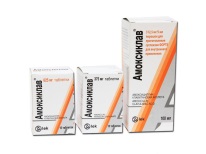 Amoxiclav
Amoxiclav
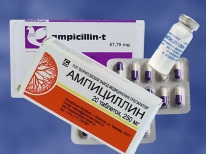 Ampicillin
Ampicillin
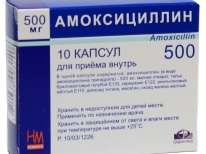 Amoxicillin
Amoxicillin
If the penicillins failed, and the child was not cured, or the young patient had recently been treated with antibiotics in this group, the doctor will prescribe macrolide antibiotics:
- Roxithromycin;
- Clarithromycin;
- Azithromycin;
- Sumamed.
![]() Roxithromycin
Roxithromycin
 Clarithromycin
Clarithromycin
 Azithromycin
Azithromycin
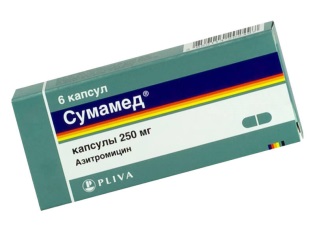 Sumamed
Sumamed
If the macrolides have not had the desired effect, or the child already has a rather advanced stage of sinusitis, the doctor will prescribe a medicine from the cephalosporin family of antibiotics. The child will have to take more "serious", but more effective drugs:
- Ceftriaxone;
- "Cefuroxime";
- Cedex.
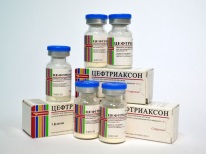 Ceftriaxone
Ceftriaxone
 Cefuroxime
Cefuroxime
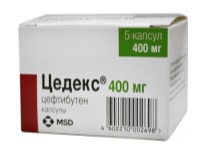 Zedox
Zedox
And very rarely in the treatment of child's sinusitis, doctors try to use antibiotics of the fluoroquinolone family. These are not children's antibiotics, but sometimes they are still prescribed to children after 5 years for the treatment of severe antritis caused by the blue pus bacillus:
- “Ciprofloxacin” (“Digran”);
- "Lomefloxacin".
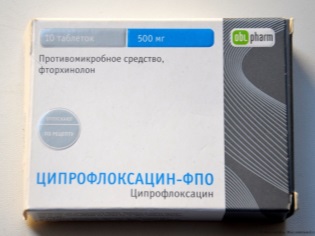 Ciprofloxacin
Ciprofloxacin
 Lomefloxacin
Lomefloxacin
All of the above is appropriate for situations where the child has acute forms of sinusitis. With chronic disease The use of antibiotics causes considerable doubts among scientists and doctors - it may happen that all antibacterial drugs will be tried, and the next exacerbation of sinusitis will have nothing to treat.
Drops and sprays for treatment
Local antibiotic treatment in the treatment of sinusitis in children is considered the most optimal solution.
After all, using the medicine through the nose in the form of drops or spray, we significantly reduce the risk of such unpleasant consequences of taking antibiotics such as dysbacteriosis, thrush, allergic reactions. This for a growing body is definitely better. In addition, the antibiotic, delivered "to destination", to the site of inflammation, has a healing effect faster.
If the respiratory channel is open, then problems with the use of drops and sprays will not arise. If closed, the doctor may suggest a “puncture”, and then prescribe local antibiotics.
The most popular antibiotics local application are considered:
- Isofra. Potent drug with the antibiotic Framycetin is usually recommended for children from one and a half years. However, in some cases, "Izofru" may also be prescribed to younger children. An antibiotic is sold in the form of a spray in 15 ml vials. Also, the drug is available in nasal drops. Doctors emphasize that "Isofroy" can be treated for sinusitis, sinusitis, provided that nasal septum not damaged.
- "Polydex". This spray has both anti-inflammatory and bacterial effects. Antibiotics in the composition - "Neomycin" and "Polymyxin." It comes in the form of ear drops and nasal spray. Children are recommended from 2.5 years.
- "Bioparox" - an aerosol that improves the condition of the nasal mucosa. The antibiotic in the composition - "Fusafungin", the drug is prescribed to children aged 2.5 years. On sale "Bioparox" is in bottles of 20 ml. The drug has a significant list of contraindications.
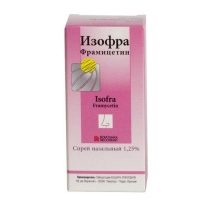 Isofra
Isofra
 Polydex
Polydex
 Bioparox
Bioparox
Most antibiotic drip forms and antibacterial sprays are contraindicated in children under 2–3 years of age. But in infancy, sinusitis is a rarity, since the final formation of the sinuses in children is completed only by 4 years. The most susceptible to sinusitis is children aged 7-10 years.
Complicated drops
“Complicated drops” in the nose were the only effective way to defeat sinusitis when my eldest son was undergoing treatment in his 12 years. After the tried and tested “fashionable” and rather expensive sprays, even after a course of antibiotics intramuscularly, he didn’t have a significant improvement. And “difficult drops” helped us recover.
“Complicated drops” is a drug that consists of several other drugs in the form of drops.Names, proportions and exact composition are prescribed by the doctor, and the drops themselves are manufactured by pharmacists in a pharmacy with its own prescription department.
Usually, the doctor resorts to the "difficult drops" when sinusitis is prolonged, recovery does not occur even after a course of therapy, or in case of a severe form of the disease.
Antibiotics are often used in “compound drops”. To keep such drops usually can not be long - about five - seven days.
About the treatment of sinusitis in children, about antibiotics, vasoconstrictor and complex nose drops can be found in this video:
Before applying the drops or spray, it is necessary to rinse the sinuses. For this fit saline solution (1 cup of boiled chilled water per 1 teaspoon salt), soda solution or sea water, furatsilina solution or a weak solution of potassium permanganate. At home, rinsing can be easily done with a rubber pharmacy pear. It is also possible to wash the sinuses with a syringe from which to pre-remove the needle. Pharmacies today are selling special devices for washing the nose.
After washing it is advisable to rest a little and drip. vasoconstrictor drugsif there is a feeling of congestion (ie, swelling in the nose). In a few minutes it will be possible to breathe and then you can already bury the drops and spray with antibiotics.
Antibiotics for inhalation in the treatment of sinusitis:
- "Dioxidin". In nebulizers, “Dioxidin” is used in the form of a special solution for inhalation. Such procedures can be performed for children who have reached the age of two. For children from 2 to 6 years old, inhalation should last 1 minute. Children from 6 to 12 years old - no more than two minutes.
- Ceftriaxone. In nebulizers use a dry mixture intended for injection. Bottle of 1 ml of drug + 5 ml of saline. The duration of inhalation for a child with antritis is no more than 4 to 5 minutes.
- "Streptomycin". Inhalations with this antibiotic for antritis are not recommended for children under 1 year of age. The duration of the procedure is no more than 3-4 minutes.
Features of treatment
- This can be done both in the hospital and at home. Heavy forms the disease is likely to require hospitalization and subsequent surgery.
- You can not change the dosage of the drug, interrupt the course of treatment even after a visible improvement in the child's condition. Unfinished sinusitis is likely to become chronic.

- It is strictly forbidden to warm the nasal cavities during sinus. Warm compresses and a hot-water bottle on the nose are sure to please the bacteria that have settled in the child’s sinuses. They will thank you. Any warming up for sinus will benefit only if there is no pus in the sinuses, and the treatment has reached the "finish line".
- While taking antibiotics in the treatment of sinusitis do not forget to give your child to drink the bacteriophages "Bifidumbakterin", "Bifiform" and others for the prevention of dysbacteriosis.
Sinusitis - a disease characterized by inflammation of the maxillary sinuses. It is a type of sinusitis, acute or chronic. In this case, inflammation occurs in maxillary sinusIn medical practice, it has a name - maxillary.
In acute sinusitis, inflammation occurs in part of the epithelial cells, blood vessels and loose fabric.
In the case of chronic sinusitis, the inflammatory process captures the submucosa and extends to the bony part of the sinus.

Note that the difference between sinusitis and sinusitis does not exist, so often in the patient's history, you can meet the diagnosis - maxillary sinusitis. Sinusitis is one of the varieties of sinusitis.
This disease can affect patients of any age and most often in the autumn-winter period.
What are the causes of sinusitis?
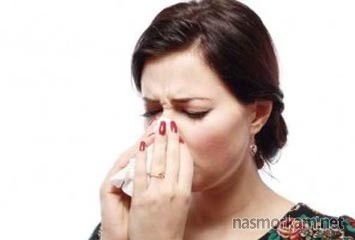 Disease therapy is slightly complicated by the fact that many factors can be the causes of development. The development of pathology in adults is primarily affected by the presence of infections of the upper respiratory tract. Often the disease is a consequence of acute respiratory infections or influenza, as well as other viral diseases.
Disease therapy is slightly complicated by the fact that many factors can be the causes of development. The development of pathology in adults is primarily affected by the presence of infections of the upper respiratory tract. Often the disease is a consequence of acute respiratory infections or influenza, as well as other viral diseases.
If we talk about children, then most often the cause of sinusitis is mycoplasmosis and chlamydia. In this case, the treatment will be based on the use of macrolide drugs.

A second, far from uncommon cause, can be diseases of ENT organs. In this case, we are talking about chronic rhinitis, which clogs the excretory opening, thereby contributing to the development of sinusitis. Occlusion occurs on the background of swelling of the nasal mucosa. Therefore, rhinitis is recommended for adrenomimetics that relieve swelling of the mucous membrane.
Also, pharyngitis can be the cause of the development of sinusitis, since it acts as an infectious source.
More rarely, the cause may be a curvature of the nasal septum, namely a violation of ventilation. In this case drug treatment will not be effective, since this cause tends to cause relapses. The only solution would be an operation to correct the nasal septum.
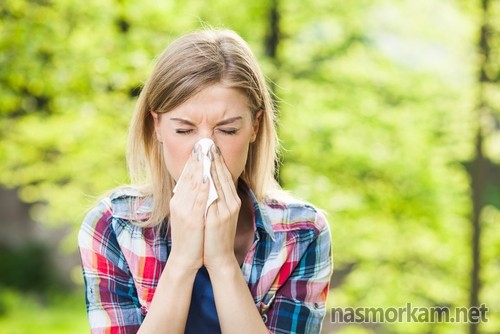
It is necessary to mention the possible culprits for the development of sinusitis - this pulpitis or the last stages of caries. Inflammation occurs due to the spread of infection from the diseased tooth to the maxillary sinuses.
Recently, in medical practice occurs sinusitis that occurs on the background allergic reaction. Often rhinitis can join this course of the disease.
We should not forget about chronic maxillary sinusitis, which is a consequence of undertreated sinusitis.
Clinical signs may be ambiguous and do not always give reason to think about the presence of the inflammatory process.
 The first signs and symptoms of the acute course of the disease are a feeling of constriction in the nasal septum and pain, which is often observed in the forehead area. Often, such pain can spread to half of the face and even to the back of the head.
The first signs and symptoms of the acute course of the disease are a feeling of constriction in the nasal septum and pain, which is often observed in the forehead area. Often, such pain can spread to half of the face and even to the back of the head.
When you tilt your head down, you can feel that discomfort intensified. Pain in the frontal part of the head may be less intense in the morning and increase at night.
Headache may accompany the patient throughout the day. This is due to the accumulation of pus in the maxillary sinus.
The second symptom of sinusitis is - a runny nose. Most often, the discharge is purulent, the color is from dark yellow to green.
The next thing that can be observed is an increase in temperature and malaise. For this reason, sinusitis is often confused with ordinary flu or acute respiratory infections.
Acute sinusitis It takes up to 3 weeks, but often with proper and timely treatment, it ends with recovery.
Chronic sinusitis characterized by not pronounced symptoms, which often inhibits the process of treatment. The only symptom that should be alerted - constant rhinitisresistant to local treatment. Sometimes pain can migrate from the orbital area to the back of the head.
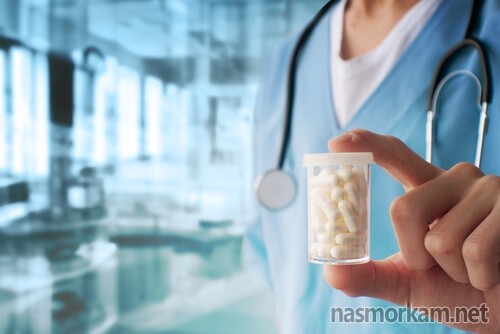 The prescription of antibiotic therapy is the basis in the treatment of lesions of the upper respiratory tract, as well as other infectious diseases. The task of antibiotic therapy is to suppress the development of bacteria.
The prescription of antibiotic therapy is the basis in the treatment of lesions of the upper respiratory tract, as well as other infectious diseases. The task of antibiotic therapy is to suppress the development of bacteria.
Antibiotics are used both in the acute form of pathology and in chronic course. In the case when the doctor diagnosed acute sinusitis in acute form - an increased dose of antibiotic is prescribed, the treatment itself lasts no more than 7 days. Chronic sinusitis requires longer treatment, sometimes up to 4 weeks.
Antibiotic therapy involves not only eliminating the infection, but also preventing complications. And also, if local drugs do not help in the treatment of the disease.
We should not forget that all antibiotics should be taken strictly on the recommendation of a doctor, especially when treating children and pregnant women. It is believed that the injectable form of antibiotics is most effective, however, there are a number of tablet preparations that are not less effective.
Below we consider the main drugs and methods of treatment that are prescribed for the treatment of sinusitis (sinusitis).
Macrolide drugs
These are the safest, but no less effective drugs. They prevent the growth of bacteria and the development of infection, and are suitable for both the acute course of the disease and the chronic. The most popular medicines in this group are the following:
Azithromycin. Not an expensive drug, has an antimicrobial effect. Not recommended for people with liver disease or possible allergies to one of the components of the medication. Erythromycin. The action is similar to penicillins. Not effective against gram-negative microorganisms. It does not have many side effects, it is often prescribed to patients with allergies to penicillin drugs.
Betalactam funds
One more not less known antibiotics - preparations of beta-lactam group, have a natural basis. They are quite sparing with a minimum of side effects, but are active against limited types of bacteria.
Amoxicillin. Quite effectively destroys streptococci and gram-negative rods. Sparing drug, because it has no negative effects on the body. However, it is intended for short-term use, as bacterial agents quickly adapt to the active substance of the drug. Augmentin. Refers to protected penicillins (with the addition of clavuanic acid). Actively inhibits the growth of bacteria, is a broad-spectrum antibiotic. With the right dosage and does not cause severe side effects.
Cephalosporin series
Cephalosporins actually belong to the penicillin series, but are more effective. Preparations of this group actively destroy bacteria that develop during sinusitis. Today, the most famous is ceftriaxone, belongs to the 3rd generation of antibiotics.
Ceftriaxone. A popular drug has wide range and effectively acts on pathogenic flora. Often prescribed for sinus, however, the tool has a sufficiently many side effects. Therefore, this medication treatment is not recommended during pregnancy and children.
 Sometimes a specialist may prescribe drugs tetracycline group. They have an antimicrobial effect, but are intended only for local use. For this reason, they are used as independent means for treatment. It is advisable to appoint as an additional drug.
Sometimes a specialist may prescribe drugs tetracycline group. They have an antimicrobial effect, but are intended only for local use. For this reason, they are used as independent means for treatment. It is advisable to appoint as an additional drug.
It is important to remember that treatment with medication should be carried out under the supervision of an ENT doctor. Be sure to take only the prescribed course of antimicrobial drugs, observe the dosage and if any side effects occur, immediately contact your doctor.
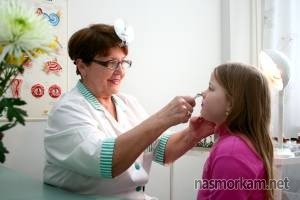 To the disease in a child, must be treated with extreme caution. Only in exceptional cases, the doctor prescribes the use of antibiotics, described above and in the case when the treatment by other methods was not effective.
To the disease in a child, must be treated with extreme caution. Only in exceptional cases, the doctor prescribes the use of antibiotics, described above and in the case when the treatment by other methods was not effective.
The body of the child is quite fragile and taking antibiotics wide acting can adversely affect the functions of the liver, as well as disrupt the gastrointestinal microflora. In addition, there are a number of reasons that do not allow antibiotics:
- in the case when the sinusitis developed against the background of a viral infection;
- the cause of the disease was a fungus;
- sinusitis (sinusitis) as a residual allergy;
- pathology has a light form that does not require the use of antibiotics.
Therefore, in the treatment of children, doctors are increasingly recommending modern means of local administration. They effectively eliminate the infection, but do not have side effects on the body of the baby.
Recently, the drug Bioparox in the form of an inhaler and its analogue Hexoral became very popular. They are effective antibiotics for topical use. Indispensable in the treatment of angina, sinusitis and sinusitis in children do not cause side effects. Therapeutic effect observed after only 7-10 days.
Sinusitis in pregnancy: treatment

Any disease during pregnancy becomes a real test for the future mother. Indeed, almost all drugs are not recommended for use in carrying a child.
Therefore, very often such patients try to resort to treatment with folk remedies - tinctures, decoctions, they are used as independent means. And this is a major mistake that should not be made.
It should be understood that during pregnancy any infection is more dangerous than taking antibiotics, both for mother and child. For this reason, the treatment of sinusitis should be timely, correct and with minimal use. medicines.
There are certain treatments during pregnancy:
- application traditional medicine in combination with other methods of treatment;
- drug treatment;
- antimicrobial agents for topical use;
- homeopathy;
- conservative treatment (puncture of the maxillary sinuses).
Rinsing the nose with antritis for expectant mothers
 The most gentle method of therapy. The bottom line is washing the maxillary sinuses with fluid. The patient is placed on his back, while the head should be slightly lower than the body itself.
The most gentle method of therapy. The bottom line is washing the maxillary sinuses with fluid. The patient is placed on his back, while the head should be slightly lower than the body itself.
A special solution is poured into one nostril, and at the same time an apparatus is connected to suck out the liquid. Thus, accumulated pus is removed.
The funds should be in addition to the main treatment with antibiotics or topical preparations. So, decoctions of medicinal herbs are often used during the washing described above.
How to treat antritis with antibiotics

Purpose drug therapy during pregnancy requires special attention. It is advisable to appoint it in the case when the risk of treatment is much less, and the benefits are many times greater. Today, pharmacology has gone far ahead and creates drugs that are allowed to be taken during pregnancy. Among them are the following:
- Augmentin;
- Preparations of the cephalosporins group;
- With severe course diseases - Spiramycin.
One more least effective remedy is Sinupret. It actively inhibits the growth of bacteria, helps to dilute the contents of the sinuses. Contains extracts from medicinal herbs, which significantly reduces the risk of a negative impact on the future mother and fetus.
Topical preparations
The main objective of these drugs - to remove edema, are available in the form of drops or sprays. Additionally, have a vasoconstrictor effect. The most famous: Nazivin and Otrivin. But, during pregnancy, the use of such remedies cannot be recommended.
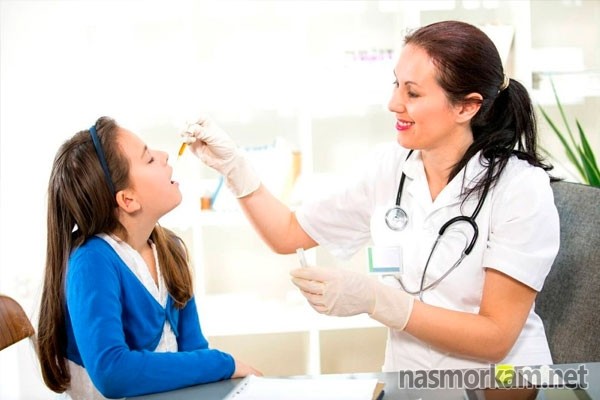
Homeopathic medicines can be a good substitute for antibiotics or antimicrobial agents. However, it should be remembered that the funds of this group are less effective, and their therapeutic effect significantly longer than antibiotics.
Note that most of the drugs in this group should be applied in a course of up to 3 months. Homeopathy is designed to stimulate the immune system, rather than a full treatment of sinusitis. Most often, the following remedies are recommended:
- Asinis;
- Cinnabsin.
Puncture (puncture) of the maxillary sinuses
In some cases, it may be required as the most acceptable and non-alternative method of treating sinusitis. The puncture consists in the removal of pus after a puncture with a special needle and the introduction of a solution. The procedure allows you to remove the swelling of the mucous membrane, eliminate pus and reduce headaches.

Most often, the primary cause of the disease in infants is the advanced form of the common cold. Often, this pathology affects children prone to allergies of various kinds.
Infants may be prescribed drops with antibiotics, for example, Isofra and Polidex. Pathology therapy in infants up to 3 months - exclusively with drops, spray preparations are applied no earlier than 2 years.
In some cases, the doctor may prescribe the use of the drug penicillin - Amoxicillin. Infants up to 12 months are prescribed 25-50 mg of the drug per 1 kg of weight.
For example, a child weighs 3 kg, the dose of the drug will be: 75 mg 3 times a day. For infants, the antibiotic is administered as a suspension, which must be mixed with breast milk or baby food.
Penicillin preparations, like other antibiotics, have an increased allergic reaction to infants. Therefore, the treatment of sinusitis may be accompanied by reddening of the skin or urticaria. This effect requires discontinuation of the drug and treatment to the attending physician.
Antibiotic release form
Antibiotics for the treatment of diseases such as sinusitis (sinusitis) are available in the following forms:
- tablets (capsules);
- drops (sprays);
- injections;
- inhalation.
What form of antibiotic to choose, determines the doctor, based on the age and symptoms of the patient. If an adult patient or teenager, then it can be pill form or injection.
Small children and infants therapy in tablets is prohibited, it is advisable to appoint drops based on antibiotics or sprays.
 The use of antibiotics for sinusitis (sinusitis) may be prescribed: in the form of injections (injections), orally (capsules, tablets), local reception (drops, inhalations). If the disease proceeds with moderate severity, then you can get by taking pills.
The use of antibiotics for sinusitis (sinusitis) may be prescribed: in the form of injections (injections), orally (capsules, tablets), local reception (drops, inhalations). If the disease proceeds with moderate severity, then you can get by taking pills.
More severe form of the disease, will require the introduction of drugs intravenously or intramuscularly. As the symptoms and condition improve, the patient is transferred to a tablet form.
The use of antibiotics requires compliance with some rules:
- strictly observe the prescribed dose and time between doses;
- drinking any antibiotics is necessary only at the rate prescribed by the doctor;
- if any side effects appear, you should stop taking the drug and consult a doctor.
What are the symptoms of sinusitis? Home Diagnosis

Assume the development of the disease can be on the following main features:
The next step will be an appeal to an ENT specialist who will examine in more detail and prescribe the appropriate treatment. The most informative method for diagnosing sinusitis is an x-ray of the maxillary sinuses. The picture allows you to accurately see the presence of the inflammatory process.
In some cases, puncture is prescribed - as a method of diagnosing sinusitis (sinusitis). With the help of a puncture and sucking the contents of the doctor can easily establish the diagnosis.
Sinusitis is not such a harmless disease as it may seem at first glance. Why are these diseases dangerous? The main danger is that, against the background of infection, the process of pus formation in the sinuses starts, hence the high risk of developing meningitis.
With timely treatment, this complication occurs quite rarely. But, in some cases, the infection can affect the orbital area, which causes swelling and severe pain.
Sinusitis - a type of sinusitis, a disease of the maxillary sinus (sinuses) of the nose, caused by various kinds of infections or as a complication of other inflammatory processes in the ENT organs. The most effective alternative treatment for antritis is antibiotic therapy with antibiotics.
Antibiotics - an alternative to surgery
Treatment of antritis with antibiotics - a necessary measure, since only these drugs can affect the infection or virus by destroying and preventing the reproduction of pathogens.
Antibacterial therapy can be both a leading means of treatment and auxiliary.
The timely appointment of the necessary drugs can eliminate the need for surgery (sinus puncture), as well as prevent severe complications - transition to the chronic form, frontitis, sore throat, pneumonia, otitis media, meningitis, etc.
The type of sinusitis and its severity significantly affects the choice of antibiotic. Treatment can only pick a doctor.
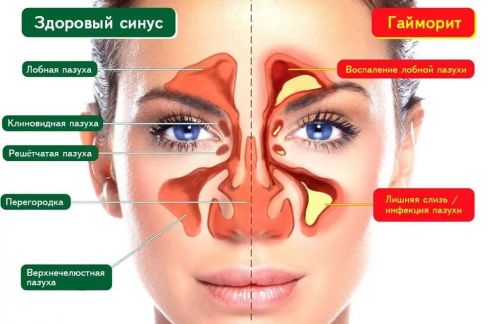
Types of antibiotics for sinus
Modern pharmacology offers a wide range of medical forms of antibiotic drugs: tablets, injections, sprays, solutions, drops, suppositories.
Antibiotics belong to different groups. For the treatment of sinusitis, the most frequently used drugs are groups of penicillins, macrolides, cephalosporins, tetracyclines, fluoroquinolones.
Which antibiotics to take for sinus in adults depends on the nature of the disease, general condition and other factors.
If the patient’s condition requires more than local treatment, but also at the level of the whole organism - the appointment of several drugs at the same time will be appropriate.

Therapy with the help of tablets for sinus
The main goal in the treatment of sinusitis is the resumption of drainage function and elimination of the infectious-inflammatory process in the maxillary sinuses.
In the absolute majority of cases, doctors prescribe a complex therapy for sinus, the main weapon of which are tablets. Oral administration of antibiotics is painless and at the same time not inferior in its effectiveness to injections.
A positive result from the pills will not have to wait long. They enter the bloodstream and spread throughout the body. Then the bactericidal antibiotic destroys the bacteria completely, and the bacteriostatic inhibits their reproduction and enables the human immune system to overcome the remaining microorganisms.

Among other things, pharmaceutical diversity offers options that suit everyone - from expensive tablets to cheaper, but no less effective counterparts.
Among the minuses of the tablet form is an increase in the load on the system of the digestive organs, as a result of which dysbacteriosis and disorders of the digestive function occur. At the same time, pharmaceutical companies will offer a large number of drugs to restore the optimal balance of intestinal microflora.

Antibiotics in tablets for sinus
The choice of tablets from antritis for adults is wide in origin and varied in price policy. In each group of antibiotics there are drugs in the form of tablets.
Antibiotic pills for antritis adults:
- Penicillin group: Augmentin, Flemoksin soljutab, Ampillitsin, Hikontsil, Amoxicillin, Amoxiclav;
- Macrolide group: Azithromycin, Clarithromycin, Sumamed, Macropene;
- Cephalosporin group: Zinnat, Supraks;
- Tetracycline group: Tetracycline, Doxycycline;
- Fluoroquinolone group: Ofloxacin, Moxifloxacin, Levofloxacin;
This is not the whole list of drugs that are used in case of inflammation of the maxillary cavity of the nose.
The name of an antibiotic for sinus can only be prescribed by an otolaryngologist.
Features of antibiotic groups for sinus
Tablets from each individual group of antibiotics have a different effect, and their choice depends on the type of sinusitis, its causes, degree, form, course of the disease.
In addition to these moments, the choice of the group is also influenced by individual characteristics: the presence of intolerance in a patient of any group.
Penicillins. Penicillin antibiotics are considered to be the best antibacterial agent in the fight against this disease.
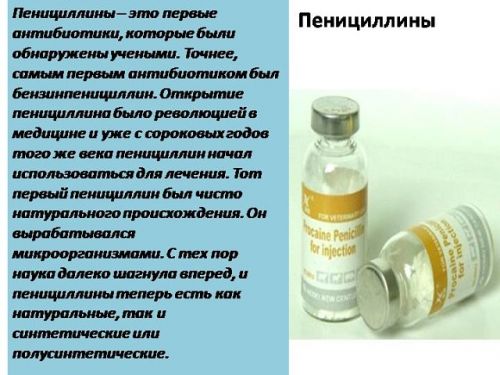
This is due to relatively fewer side effects, as well as relatively easy tolerance by the body.
Antibiotic treatment penicillin group may be ineffective if bacteria are used to them.
Macrolides and Tetracyclines. This group is prescribed in case of hypersensitivity to penicillins, as well as if antritis is caused by mycoplasma bacteria.
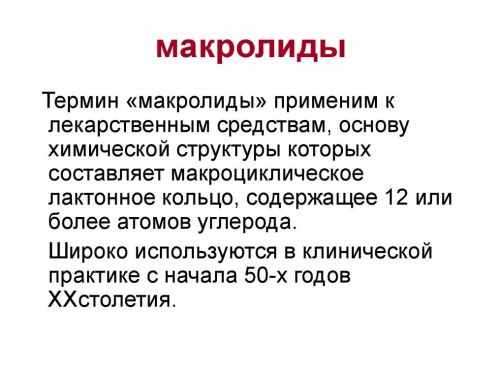
Cephalosporins. This series can be conventionally given the name “heavy artillery” because of the expediency of their appointment in severe inflammations and in situations where more lightweight medicines fail to cope with their task and there is no positive dynamic in treatment. This type of remedy neutralizes the acute phase. However, most of the antibiotics of this group are available in injection form.
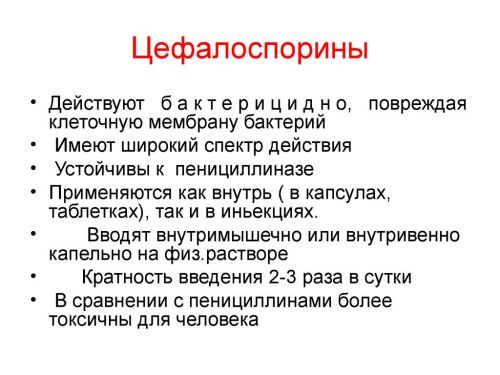
Fluoroquinolones. The advantage of these synthetic antibiotics is that pathogens have not had time to develop resistance to them.
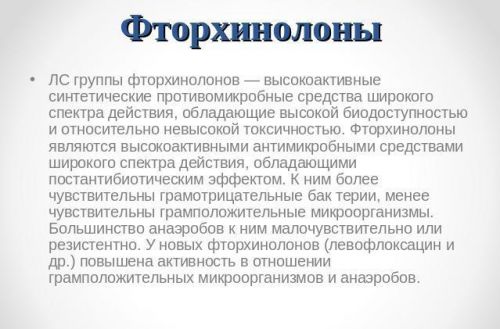
The prescribed antibiotic may be ineffective if the causative agent is resistant to this species. In this case, the doctor will prescribe other treatments.
The choice of antibacterial drugs is made taking into account the establishment of the pathogen and the individual physiological properties of the patient.
Names and method of use of tablets for antritis
The most common antibiotics in pills (or capsules), which are prescribed to drink with sinusitis:
| Drug name | Adult Dosage | A course of treatment |
| Amoxicillin | three times a day, 500 mg | 8-14 days |
| Flemoxine Solutab | three times a day, 500 mg | 8-14 days |
| Amoxiclav | 2-3 times a day, 500 mg | 8-14 days |
| Azithromycin | on the first day of treatment, 500 mg, in the period from the second to the fifth day, 250 mg OR for three days, 500 mg | 3-5 days |
| Sumamed | once a day 500 mg | 3-5 days |
| Zinnat | twice daily 250 mg | 5-10 days |
| Doxycycline | 1-2 times a day 100 mg | 5–7 days |
| Ofloxacin | once a day for 200-400 mg | 7-10 days |
The cost of drugs is higher than the possibilities, you can use cheaper analogues with identical active ingredient. If, within three days after the start of antibacterial therapy, there was no improvement, then this means that the etiology of sinusitis was found out incorrectly or the causative agent of the disease managed to adapt to the components of the medicine.

Antibiotic rules
Antibiotic drugs are potent drugs, you need to take them, observing the following rules:
- you cannot independently choose the type of antibiotic, in the presence of an allergic reaction in the history of any group - be sure to inform the doctor;
- bring the course of treatment of inflammation of the maxillary sinuses with antibiotics to the end, even in the case of an apparent improvement in the condition, otherwise the disease may develop again;
- more effective antibacterial treatment will be combined with other methods, such as local decongestants and vasoconstrictor agents (drops, sprays, physiotherapy);
- do not change the dosage, strictly follow the instructions;
- after a course of antibiotics to be treated for dysbiosis.
For any atypical conditions that occur while taking antibacterial agents, you should report them to the otolaryngologist.

Contraindications for antibiotics for sinus
Each antibacterial drug, like any other drug, has contraindications, which are caused by many factors, the predetermining of which is considered chemical composition. Absolute contraindications do not exist, in any situation, you can choose at least one remedy that gently affects the body.
But a number of relative contraindications to the use of antibiotics does exist, among them:
- hypersensitivity to the contained components, a sign of which is an allergy;
- pregnancy and lactation - in rare cases, penicillin antibiotics are allowed, if the benefit to the mother is rated higher than the potential harm to the fetus;
- in diseases of the digestive organs, antibiotics are also prescribed with caution;
- allergic sinusitis;
- hepatic and renal failure.
Thus, to cure sinusitis with antibiotics in pills is an effective and advantageous solution, since the variety of medicines allows you to choose the option that is suitable for each individual case. However, with all the availability of information, in no case should it become a guide to self-treatment.
admin
The author of the article
Popular
- Breast cancer is curable at any stage.
- The remedy for the cold Sinupret
- Azitrox - official instructions for use
- Chicken-bjaka: allowed antibiotics were found in Russian chicken
- Oral Cancer: Symptoms and Treatment
- Dark and thick blood during menstruation.
- Modern analogues of doxycycline tablets
- Is it possible to die from pneumonia
- What earwax will tell all about your health
- Tussin: instructions for use



